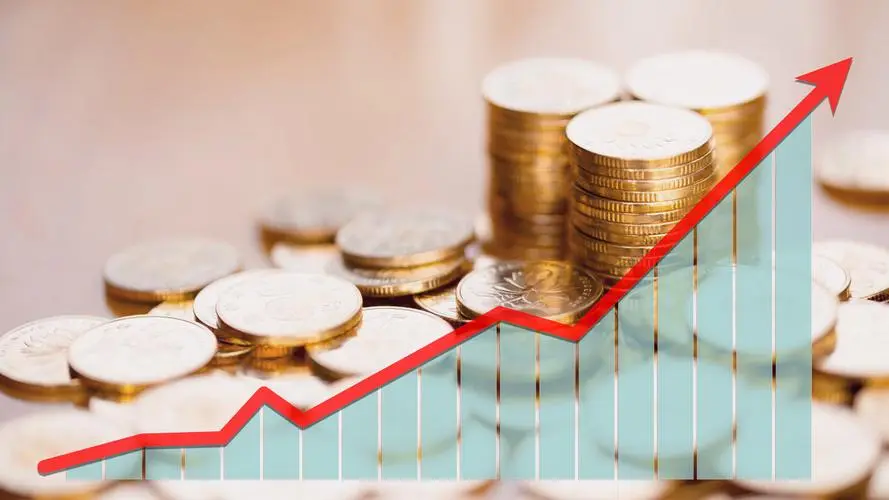ETF Weekly Flow: 医药 ETF Soars to Record Highs Amidst Market Volatility
Meta Description: Dive into the weekly ETF flow report, exploring key trends in stock and industry ETFs, including the surging popularity of medical ETFs and the recent dip in broader market ETFs.
This week, the stock market experienced a rollercoaster ride, with major indexes fluctuating in a tug-of-war between bullish and bearish sentiment. However, amidst the volatility, a clear trend emerged - investors are flocking to medical and pharmaceutical ETFs, seeking refuge in a sector known for its resilience and long-term growth potential.
ETF Flows: A Tale of Two Cities
The week witnessed a mixed bag of performance, with the Shanghai Composite Index and the Shenzhen Component Index inching up by a modest 1.21% and 1.15% respectively. Despite the overall positive trend, the flow of funds into ETFs painted a nuanced picture. While investors poured a substantial 220 billion yuan into ETFs across the board, a closer look revealed a clear shift in focus.
The Rise of Medical ETFs
The healthcare sector has stood out as a beacon of stability in a turbulent market. This was reflected in the ETF flow data. Medical and pharmaceutical ETFs saw a dramatic surge in popularity, attracting a significant influx of funds.
- Medical ETF: The medical ETF witnessed a remarkable 5.7 billion increase in its number of shares, signaling a massive surge in investor confidence. The ETF also saw a net inflow of 154 million yuan.
- Pharmaceutical ETF: Following closely behind, the pharmaceutical ETF experienced a significant 3.77 billion increase in shares and a 116 million yuan net inflow.
The influx of funds into these ETFs is likely a response to the growing optimism surrounding the healthcare sector. With the market generally exhibiting cautious sentiment, investors are seeking out sectors perceived as safe havens, and healthcare, with its inherent defensive qualities, fits the bill perfectly.
The Dip in Other ETFs
While medical ETFs were riding high, certain other sectors experienced a notable outflow of funds. This suggests that investors may be taking a more cautious approach towards these sectors, possibly due to concerns about their future growth prospects.
- Alcohol ETF: The alcohol ETF lost 2.16 billion shares, indicating a net outflow of 107 million yuan.
- Brokerage ETF: The brokerage ETF saw a reduction of 1.35 billion shares and a net outflow of 105 million yuan.
The decline in these ETFs may be attributable to various factors, including a shift in investor preference, concerns about regulatory changes, or simply a correction after a period of strong performance.
The Wider Picture
Overall, the ETF flow data reveals a market experiencing a period of flux. While some sectors are seeing significant inflows, others are experiencing outflows. Ultimately, this suggests that investors are carefully navigating the market, seeking out sectors that offer both growth potential and stability in the face of a volatile environment.
Key ETF Performance
| ETF Name | Performance | Change in Shares | Net Inflow (yuan) |
|---|---|---|---|
| 沪深300 ETF | +1.21% | +14.02 billion | +45.59 billion |
| 创业板 ETF | | +13.88 billion | |
| 科创 50 ETF | | +12.92 billion | |
| 上证 50 ETF | +1.15% | +2.08 billion | |
| 中证 500 ETF | +1.00% | +1.87 billion | |
| 医药 ETF | | +3.77 billion | +116 million |
| 医疗 ETF | | +5.7 billion | +154 million |
| 半导体 ETF | | +3.36 billion | +211 million |
| 酒 ETF | | -2.16 billion | -107 million |
| 券商 ETF | | -1.35 billion | -105 million |
| 养殖 ETF | | -1.24 billion | -67 million |
What to Watch For
As the market continues to evolve, investors should pay close attention to the following:
- Regulatory Changes: Policy shifts can have a significant impact on the ETF market. Investors should stay informed about any new regulations or policy announcements that could affect their investment strategies.
- Economic Indicators: Economic data releases, such as inflation figures and GDP growth, can provide valuable insights into the direction of the market. Investors should keep a close eye on these indicators to gauge the overall health of the economy.
- International Events: Global events, such as trade wars or geopolitical tensions, can significantly influence the stock market. Investors should be aware of any developments that could impact their investments.
Conclusion
The ETF market is a dynamic and ever-evolving landscape. This week's flows highlight the shifting preferences of investors, who are navigating a complex investment environment. The rise of medical ETFs suggests a search for stability, while the dip in other sectors indicates cautiousness. By staying informed about market trends and key economic indicators, investors can make informed decisions and position themselves for success in the long run.
##
Understanding ETF Flows
ETF flows are a vital indicator of market sentiment and investor behavior. By analyzing the movement of funds into and out of ETFs, we gain valuable insights into:
- Sector Rotation: Flows can reveal which sectors are attracting investor interest and which are experiencing diminished appeal.
- Market Sentiment: Large inflows into ETFs typically indicate bullish sentiment, while outflows suggest a more cautious outlook.
- Strategic Positioning: Investors can use ETF flows to identify potential opportunities and risks across different asset classes and sectors.
Decoding the Medical ETF Surge
The surge in popularity of medical ETFs suggests a confluence of factors:
- Defensive Sector: Healthcare is often considered a defensive sector, meaning its performance tends to be less volatile than other sectors, making it an attractive option during periods of heightened market uncertainty.
- Long-Term Growth: The healthcare sector is expected to continue to grow in the long term, driven by factors such as an aging population and rising healthcare costs.
- Innovation & Technological Advancements: The healthcare sector is at the forefront of innovation, with advancements in areas such as biotechnology and genomics creating new opportunities for growth.
Navigating the Market: Key Considerations
Investing in ETFs can be an effective way to build a diversified portfolio and gain exposure to a wide range of assets. However, it is important to consider the following:
- Expense Ratios: ETFs come with expense ratios, which are fees charged for managing the fund. It is important to compare expense ratios across different ETFs to ensure you are getting the best value for your investment.
- Tracking Error: ETF tracking error refers to the difference between an ETF's performance and the performance of its underlying index. A lower tracking error indicates that the ETF is more closely mirroring its benchmark.
- Liquidity: Liquidity refers to the ease with which you can buy and sell an ETF. A highly liquid ETF will allow you to enter and exit positions with minimal impact on the price.
Frequently Asked Questions
Q: What is an ETF?
A: An ETF (Exchange-Traded Fund) is a type of investment fund that is traded on stock exchanges like individual stocks. ETFs typically track a specific index, such as the S&P 500 or the Nasdaq 100.
Q: How do ETFs differ from mutual funds?
A: ETFs are traded on exchanges, while mutual funds are bought and sold directly from the fund company. ETFs typically have lower expense ratios than mutual funds and offer greater flexibility in terms of trading.
Q: What are the benefits of investing in ETFs?
A: ETFs offer several benefits, including:
- Diversification: ETFs provide instant diversification across a wide range of assets, reducing investment risk.
- Transparency: The holdings of ETFs are publicly disclosed, providing investors with full transparency into the investment strategy.
- Liquidity: ETFs are traded on exchanges, offering high liquidity and ease of trading.
- Low Costs: ETFs generally have lower expense ratios than actively managed mutual funds.
Q: How can I choose the right ETF for my portfolio?
A: When choosing an ETF, consider factors such as:
- Investment Objectives: Determine your investment goals and risk tolerance.
- Expense Ratios: Compare expense ratios across different ETFs to ensure you are getting the best value for your investment.
- Tracking Error: Choose ETFs with low tracking error, indicating that they are closely mirroring their benchmark.
- Liquidity: Select ETFs with high liquidity, allowing for easy entry and exit.
Q: Are ETFs suitable for all investors?
A: ETFs can be a suitable investment for a wide range of investors, from beginners to experienced traders. However, it is important to understand the risks involved before investing.
Conclusion
ETF flows provide valuable insights into market sentiment and investor behavior. The recent surge in medical ETFs highlights the growing appeal of defensive sectors during times of market uncertainty. By carefully analyzing ETF flows and understanding the key factors influencing investment decisions, investors can navigate the market effectively and make informed choices that align with their investment objectives.



